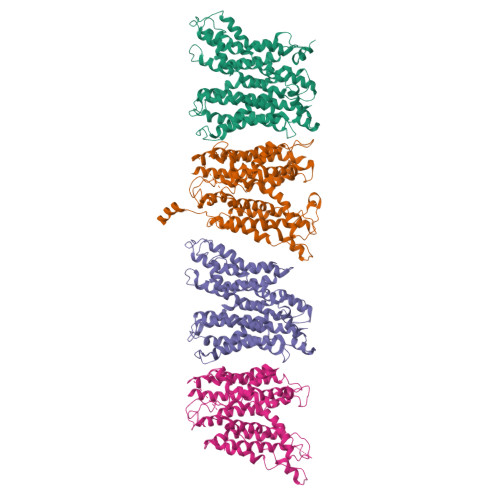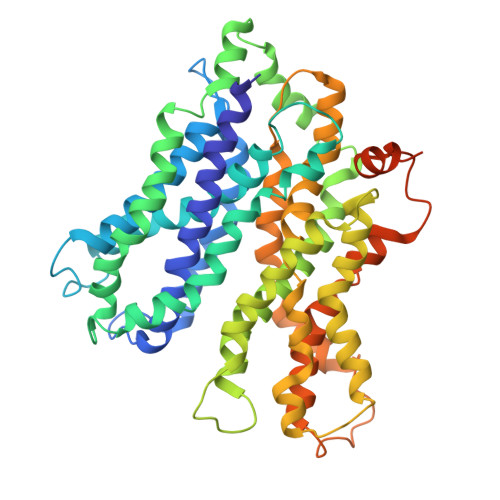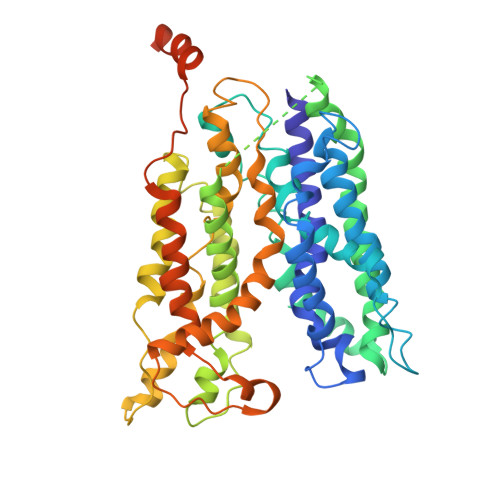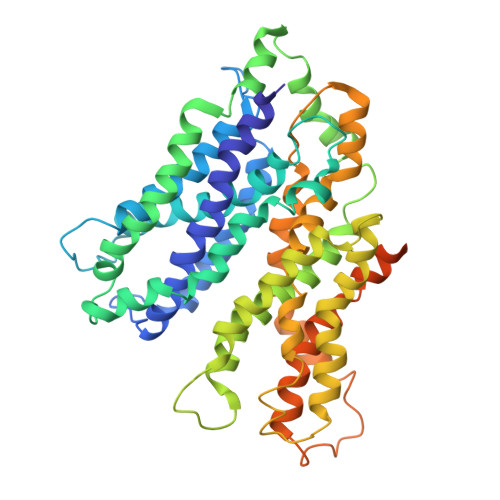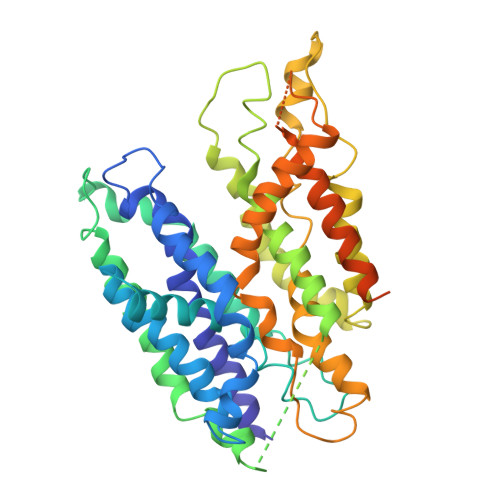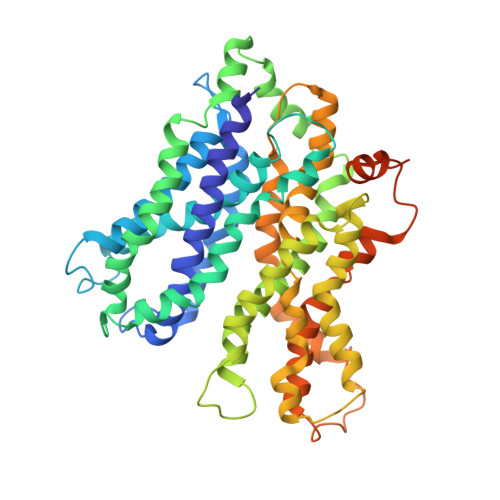Structure-based mechanism for Na(+)/melibiose symport by MelB.
Ethayathulla, A.S., Yousef, M.S., Amin, A., Leblanc, G., Kaback, H.R., Guan, L.(2014) Nat Commun 5: 3009-3009
- PubMed: 24389923
- DOI: https://doi.org/10.1038/ncomms4009
- Primary Citation of Related Structures:
4M64 - PubMed Abstract:
The bacterial melibiose permease (MelB) belongs to the glycoside-pentoside-hexuronide:cation symporter family, a part of the major facilitator superfamily (MFS). Structural information regarding glycoside-pentoside-hexuronide:cation symporter family transporters and other Na(+)-coupled permeases within MFS has been lacking, although a wealth of biochemical and biophysical data are available. Here we present the three-dimensional crystal structures of Salmonella typhimurium MelBSt in two conformations, representing an outward partially occluded and an outward inactive state of MelBSt. MelB adopts a typical MFS fold and contains a previously unidentified cation-binding motif. Three conserved acidic residues form a pyramidal-shaped cation-binding site for Na(+), Li(+) or H(+), which is in close proximity to the sugar-binding site. Both cosubstrate-binding sites are mainly contributed by the residues from the amino-terminal domain. These two structures and the functional data presented here provide mechanistic insights into Na(+)/melibiose symport. We also postulate a structural foundation for the conformational cycling necessary for transport catalysed by MFS permeases in general.
Organizational Affiliation:
Department of Cell Physiology and Molecular Biophysics, Center for Membrane Protein Research, Texas Tech University Health Sciences Center, Lubbock, Texas 79430, USA.








